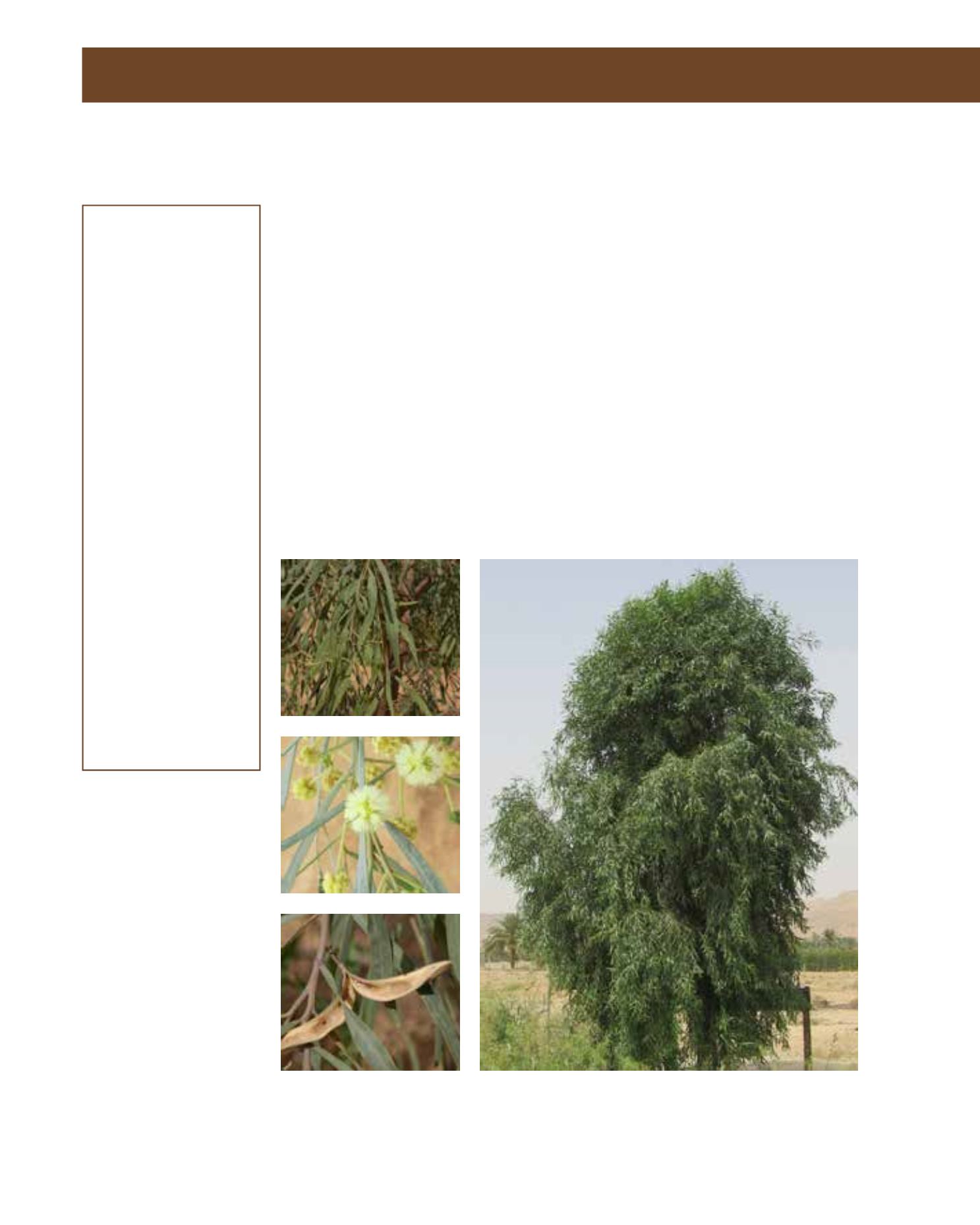

GENERAL
Origin
:
Mediterranean,
sub-tropical
Vigour
:
fairly fast
growing
Humidity
:
very arid, semi-
arid
Propagation :
sowing and
pricking out
Maintenance :
low
CONDITIONS
Urban climate :
resistant
Dessication :
resistant
Stagnant water :
resistant
Irrigation
:
low
Salinity/ppm :
very high (9000
ppm)
Hardiness
:
-3°C
SHAPE
Type
:
tree
Height
:
10 m-12 m
Spread
:
4 m-6 m
Foliage
:
evergreen
FLOWER
Colour
:
pale yellow
Size
:
1 cm - 2 cm
Period
:
February -
December
Smell
:
scented,
moderate, flower
FRUIT
Type of fruit :
pod
Fruit size
:
12 cm
This native Australian acacia is a relatively tall tree with a weeping habit and graceful canopy of
pendulous branches with long, thin and dark-green leaves. Occurring naturally in thickets and
open areas, often along watercourses and floodplains, it develops into an upright, dense specimen
with a clear trunk. Until now, this tree has rarely been seen in the Arriyadh region, but has the
potential for more use. Blooming intermittently throughout the year, usually during the winter,
the faintly fragrant, creamy-white flowers appear in pairs or clusters, followed by narrow seed. A.
salicina is a vigorous, moderate to long-lived, nitrogen-fixing tree, adapted to clayey, alkaline soils,
and tolerating poor drainage and seasonal waterlogging. It is moderate to highly salt-tolerant and
hardy, but to severe frosts. Thriving in full sun, the tree is drought-tolerant, but the provision
of deep water in the summer will encourage a deeper root system and good wind resistance.
Propagation is by scarifying seed or boiling the seed in water. The flowers’ pollen has value in
apiculture. Recommended for its foliage, A. salicina is an attractive tree for gardens or patios and
as a street tree and in parks. It has potential for erosion control, although there is a tendency to
sucker: this and the potential for its seeds to be dispersed by birds suggest that it could become
invasive. Prune periodically to thin the canopy, to reveal the weeping character and to offer less
wind resistance. The foliage is susceptible to insects and leaf diseases.
31
Acacia salicina,
Mimosaceae
Australian Willow,
Willow Acacia
















